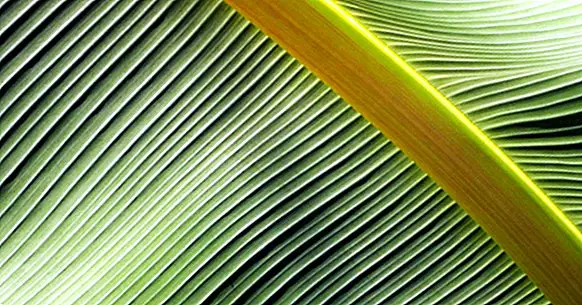The 18 best indoor plants according to Environmental Psychology
The lifestyle of today's society can be highly stressful. Although it varies according to the person and the type of activities carried out, we spend hours and hours in situations that demand us to be attentive, proactive, efficient and in constant movement, many of them in closed and limited spaces. But there are different elements that can help manage stress better, while purifying the environment and relaxing us.
Disposition of space, colors, decoration ... everything influences, whether we are in our house after a hard day or if we are working in the office. One of these elements can be found in indoor plants, which may have interesting properties. Therefore in this article you can find the best indoor plants according to environmental psychology .
- Maybe you're interested: "How to paint my house? The psychology of color explains it to you"
Indoor plants: those little strangers
Most people buy indoor plants because they are aesthetically pleasing or because they like taking care of them and watching them grow. In some cases, it is also argued that it is good to have plants at home because they absorb carbon dioxide from the environment while releasing oxygen.
However, it can be a little more unknown that the fact of being surrounded by plants has a series of benefits, causing positive effects on people both physically and mentally.
In fact, it has been proven that something as simple as going for walks in areas with abundant vegetation reduces stress levels more than walks through other types of natural environments. On the other hand, students who attend schools surrounded by forests perform better in their studies. The beneficial effect of the plants is discrete, but it is there. And we can count on him to create spaces in our homes .
Effects on the environment
To begin with, as we have seen before, plants absorb carbon dioxide, helping to purify the environment. And not only carbon dioxide, since according to what species can act as a filter against other substances harmful to health , as fumes from pollution or even harmful substances present in products such as paints and solvents.
In addition, they release oxygen and water vapor, so that they maintain a certain level of environmental humidity constant. Also, they contribute to form a barrier with respect to sound and noise coming from the outside, something very useful to have spaces in which to disconnect.
Physiological effects
At a physiological level, it has been shown that they help reduce blood pressure, in addition to purifying the environment, the quality of the air we breathe is better. And, by producing a certain level of moisture, the skin is more hydrated.
Psychological effects
At the psychological level, it has also been shown that plants have important effects in the management of stress, causing a reduction in discomfort and anguish. By reducing stress, the level of concentration can be increased , so that their presence improves productivity and the level of satisfaction in the workplace. There has also been an increase in the feeling of well-being, improving the general mood.
18 indoor plants that filter the environment and help relax
Next we present 18 indoor plants with proven utility to purify the environment at the same time they relieve stress.
Some of them have been collected from reports made by NASA after several analyzes of their ability to purify the air, while others are frequently used in aromatherapy.
1. Ficus
The ficus is one of the most common indoor plants and is usually found in homes and establishments. There is a wide variety of ficus species, not all of them indoor plants.
Among those that are They emphasize the ficus benjamina and the gomero or rubber tree . The ficus absorbs formaldehyde and methanal, but it must be borne in mind that the leaves of some variants can be toxic, so we must watch for the presence of children and pets.
2. Lily of peace
This plant is one of the few air purifying plants that produce flowers. However, it is toxic if swallowed, so it is not recommended to leave them within the reach of pets or children very small. This plant helps to eliminate mold spores, as well as formaldehyde and trichlorethylene particles. It is usually used in bathrooms.
3. Drácena
It is a plant that is already used regularly in the offices of different companies. This small plant is useful because it is able to filter the air, absorbing chemicals and harmful elements such as smoke.
Especially recommended in freshly painted places or reformed, since they absorb especially well xylene and formaldehyde and even some components of varnishes and solvents.
4. Ribbons / Loop of love / Malamadre
This indoor plant is very useful in order to eliminate the substances produced by gas-powered appliances, also having the advantage that it does not require great care.
5. Chrysanthemum
These colorful plants contribute to absorb benzene and ammonia from the air , besides being aesthetically striking and inducing a sense of well-being. They are useful in places where the use of cleaning products is frequent or when animals defecate.
6. Aloe vera
Aloe vera is a plant that has been well known since antiquity. It was used as a highly effective medicinal element, especially in the presence of wounds.
Nowadays, its medicinal use continues , in addition to being included in hygiene and self-care products. In its natural state this plant shows a great capacity to increase the amount of oxygen in the environment, which makes it a good idea to have it.
7. Tiger language
This plant absorbs chemical components such as methanal and nitrogen oxide, which is very useful to prevent toxins coming from personal hygiene products.
8. Orchid
There are numerous species of orchid, of which not all are suitable for indoor use. The orchids are among the few plants that give off oxygen at night , so that they can be suitable for places of rest like a bedroom. They also contribute to eliminating xylene.

9. Margarita
Another of the air purifying plants that flowers, the daisy is able (especially the gerbera daisy) to absorb trichlorethylene and benzene. Useful in places where there is usually smoke, ink or paint.
10. Common ivy
Ivy is a plant that helps eliminate various chemical components, being especially effective in removing mold particles. That is why Sometimes they are close to kitchens, dining rooms and bathrooms . Various investigations show that this plant helps to improve the symptoms of asthma and allergies.
11. Fern
Along with the ficus one of the best known indoor plants. This plant helps to eliminate particles of formaldehyde, xylene and benzene in addition to raising the humidity level of the environment. Useful for people with asthma and other respiratory problems .
12. Areca Palma
Leafy and requiring little care, this plant helps eliminate formaldehyde, benzene and carbon dioxide.
13. Potos
Carbon monoxide and formaldehyde are two of the substances that help to eliminate this plant, being very useful in places with elements that work with gas, as in the kitchen.
14. Chinese palm tree
The Chinese palm is another indoor plant that largely absorbs benzene and formaldehyde.
15. Lavender
This plant and the fragrance it gives off They have relaxing properties They help to reduce stress, slowing down the heart rate and blood pressure.
16. Gardenia
Plant with great relaxing properties, is sometimes placed in bedrooms due to its great effect to relieve anxiety and relax both body and mind
17. Philodendron
This plant can be toxic if swallowed. However, it is able to help eliminate some chemicals such as the volatile remains of elements such as glues and cleaning products.
18. Jasmine
The aroma that this flower emits has relaxing and soothing properties, helping to reduce the level of tension and anxiety.



















